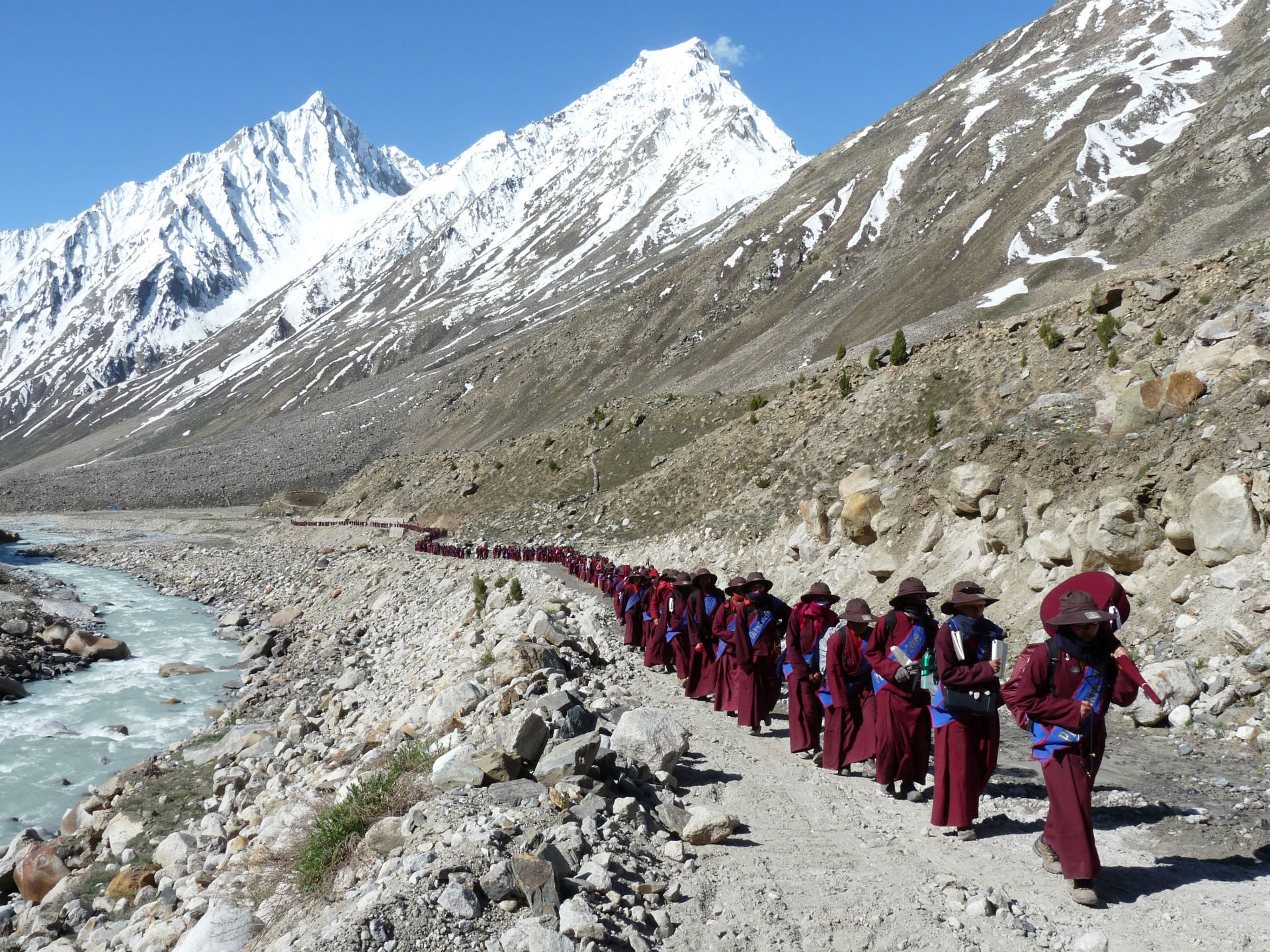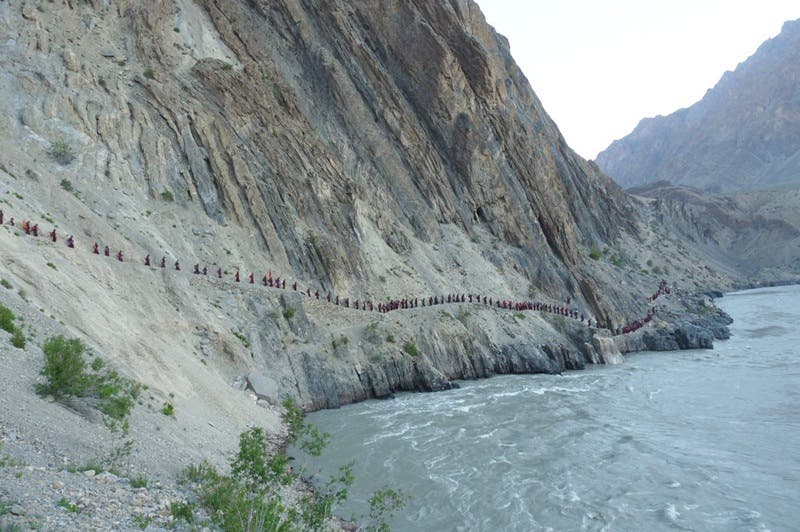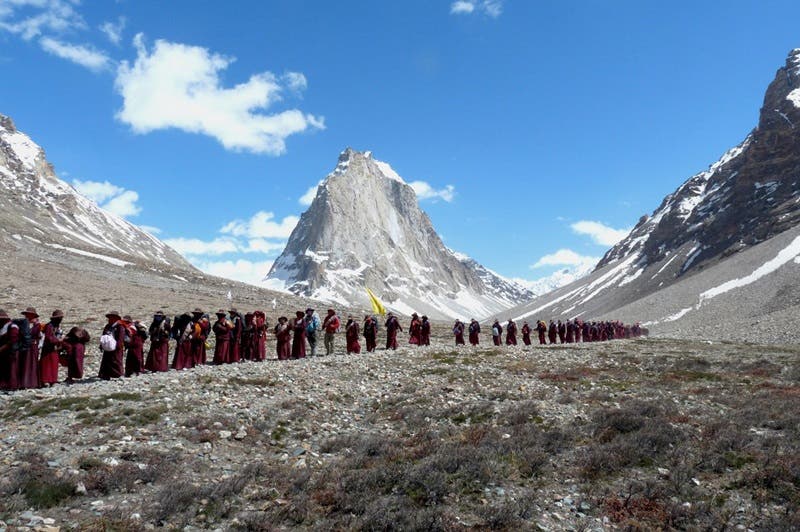Movie on a Mission: Pad Yatra


The 700 people spreading the message of environmental stewardship across the Himalayas in the documentary film Pad Yatra: A Green Odyssey literally walk the walk. Trekking 450 miles through a glacial region devastated by climate change, participants collected nearly half a ton of plastic litter (transported to a recycling facility), while educating local villagers in the three R’s: reduce, reuse, recycle. The eco-pad yatra, led by Buddhist spiritual leader the Gyalwang Drukpa, also involved the planting of 50,000 trees. Here, writer-director Wendy J.N. Lee, a participant in the trek, answers questions about the journey.
What led to the decision to shoot the film using solar power? How did you and first-time cinematographer Ngawang Sodpa—a Himalayan Buddhist monk—meet the challenges of shooting?
The decision to use solar power was based on circumstance. We were in very remote areas of the Himalayas with no electricity, and solar panels were the difference between shooting or not shooting; it was a lesson in the scarcity and preciousness of a power supply. On top of that, batteries and electronic gear don’t operate properly at high altitude and low temperature. We had to be cautious, and even intuitive, about what we chose to shoot. Of course, we’re grateful we have anything to show for our journey at all. We lost several tapes due to weather damage and the physicality of being on an expedition—unexpected river crossings, snow and ice, rain—and we were so happy to have what little we came home with. Perhaps because it was so hard to capture, this footage really is one-of-a-kind.
Does the branch of Tibetan Buddhism involved in the trek adhere to a vegetarian diet? Was the food eaten during the trek plant based?
The Drukpa lineage is largely vegetarian, and the spiritual head, the Gyalwang Drukpa, is a champion of veganism. While I cannot speak to the millions of Drukpa Buddhists throughout the world, I can say that all the monks and nuns featured in the film—500 of the 700 people—are either vegetarian or vegan, and that the remaining participants were fully vegetarian for the duration of the trek. Typical meals on the Pad Yatra consisted of vegetables, rice, local tsampa wheat, and/or beans and lentils. Cargo animals had been provided to carry the kitchen tent gear; many Drukpa monks on the trek felt so bad for the horses, donkeys, and mules that they gave what little food they had to the animals. During the Pad Yatra, the Gyalwang Drukpa kept purchasing the sick and elderly horses and sending them back to his monasteries to pasture, while the participants of the trek carried more and more of the load as time went on.

The Gyalwang Drukpa says in the film that not just plastic, but our lives too benefit from recycling. What do you think he meant by that?
I grew up in Los Angeles, where I was taught about environmental issues from an early age, and yet I never truly took the message to heart. It just sort of washed over me. Something about being on the Pad Yatra jolts you awake. Maybe it was because I had exceeded my own limits and survived, or maybe it was seeing others as fellows rather than strangers, but something about the journey transformed me from jaded L.A. film school graduate to feeling alive and creative in so many ways. For the first time, I really felt something for the environmental cause, and I felt like I could actually do something about it. So for me, being “recycled” had something to do with breaking down my fixed notions of what the world is, and feeling confident enough to participate in shaping it.